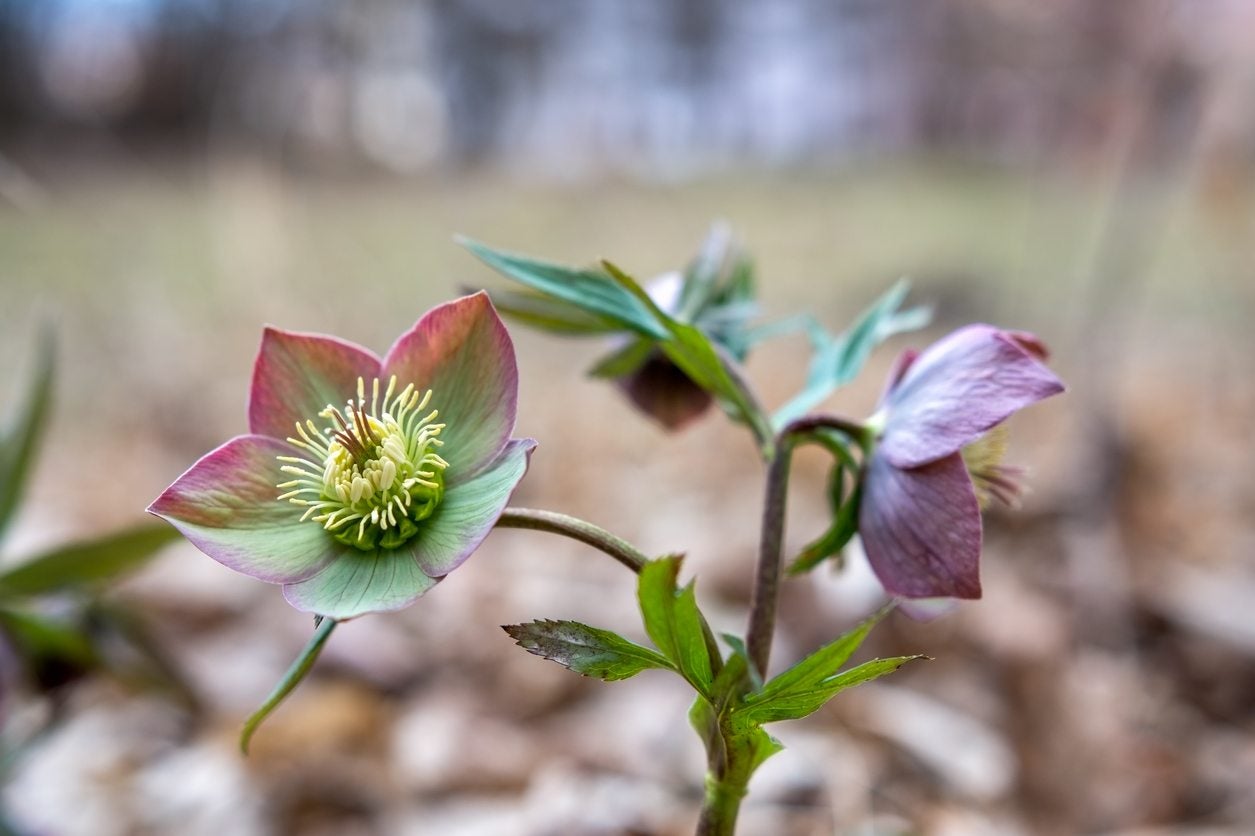How To Prune Hellebores – Learn About Pruning A Hellebore Plant


Hellebores are beautiful flowering plants that bloom early in the spring or even late winter. Most varieties of the plant are evergreens, which means last year’s growth is still hanging around when the new spring growth appears, and this can sometimes be unsightly. Keep reading to learn more about trimming hellebores and when to prune hellebores so they look their best.
When to Prune Hellebores
The best time for pruning a hellebore plant is late winter or early spring, just as soon as the new growth begins to appear. This new growth should come straight up out of the ground as little stalks. These stalks should still be surrounded by a ring of last year’s big leaves.
The old leaves may very well be damaged from the winter’s cold and looking a little rough around the edges. As soon as the new growth appears, these old leaves can be cut away, slicing them right at the base. If your old foliage is undamaged and still looks good, it’s not necessary to prune them right away, but once the new grow starts to leaf out, you’ll want to make way for them by removing the old growth.
If you leave the old growth for too long, it’ll become entangled with the new growth and much harder to trim away. Hellebores can also fall prey to snails and slugs, and masses of foliage give them moist, dark places to hide.
How to Prune Hellebores
Hellebore pruning is relatively easy. The plants are tough, and the appearance of new growth gives a clear signal to act. Remove the old growth by slicing cleanly through the stems as close as possible to the ground. It’s important to be careful while pruning, however, as the sap of the plant can irritate the skin. Always wear gloves and clean your pruning shears thoroughly after use.
Gardening tips, videos, info and more delivered right to your inbox!
Sign up for the Gardening Know How newsletter today and receive a free copy of our e-book "How to Grow Delicious Tomatoes".

The only child of a horticulturist and an English teacher, Liz Baessler was destined to become a gardening editor. She has been with Gardening Know how since 2015, and a Senior Editor since 2020. She holds a BA in English from Brandeis University and an MA in English from the University of Geneva, Switzerland. After years of gardening in containers and community garden plots, she finally has a backyard of her own, which she is systematically filling with vegetables and flowers.
-
 4 Superfast Composting Methods: Turn Waste Into Garden Gold In 30 Days Or Less
4 Superfast Composting Methods: Turn Waste Into Garden Gold In 30 Days Or LessTry the fastest composting methods to turbocharge your pile and transform kitchen scraps and garden waste into finished compost in just a few weeks.
By Mary Ellen Ellis
-
 Best Spider Plant Soil – Complete Soil Guide And Expert Tips For Keeping Plants Happy
Best Spider Plant Soil – Complete Soil Guide And Expert Tips For Keeping Plants HappySpider plants are fun and easy plants to grow, but what is the best soil for a spider plant? Selecting the right soil is important so they can thrive.
By Bonnie L. Grant